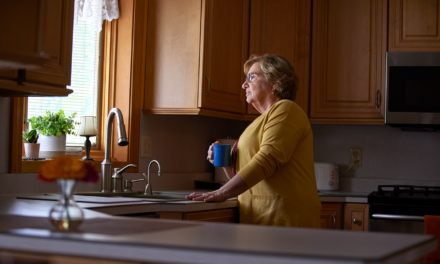Right now, it’s nearly impossible to turn on the TV or scroll through social media without mention of Coronavirus. But there are drawbacks to being this plugged in. In fact, you may have already noticed that ongoing news coverage and updates about COVID-19 have made it difficult to take a break from the situation.
What to Do About COVID-19 Burnout
On one hand, during a global pandemic like this, it’s important to receive updates from our community leaders and healthcare professionals. On the other, the seclusion that social distancing promotes can result in feelings of isolation and depression.
Can you really experience burnout from thinking about Coronavirus? Though symptoms may present differently in different individuals, signs include:
- Trouble sleeping
- Racing thoughts
- Loss of appetite
- New feelings of anxiety and depression
- Exhaustion
- Lack of purpose or motivation
- General nerves or panic
Some are to be expected, with so many unknowns at this time. It becomes a problem, however, if you’re experiencing symptoms of burnout for a full day, the majority of the day, or if they’re affecting your ability to complete daily activities.
It’s important to remember we’re only able to care for others if we take care of ourselves first. With no timeline of how long we can expect this pandemic to last, symptoms of burnout may be prolonged or worsened if not taken seriously.
Here are some tips to improve quality of life if you or a loved one is experiencing Coronavirus-related burnout.
1
Take a break.
Yes, it’s important to remain in the know, but you can stay informed without feeling consumed by Coronavirus coverage. To do so, carve out a set amount of time each day that you unplug from everything Coronavirus.
This is especially important if your job requires you to stay up to date, like a healthcare or journalist profession. Make exceptions in an emergency, but everyone deserves the chance to take a breath — and your work will be better for it.
Use your break to do something you enjoy that’s completely unrelated to this public health crisis. Cook a meal, watch an episode of your favorite show, go for a walk.
2
Get moving.
Even if working out isn’t normally a part of your routine, getting active during such a secluded time provides health benefits. If you’re not used to working from home, you may be struggling to adjust. Completing a workout creates a sense of accomplishment, and it’s easier to realign your goals afterward.
Exercise is a healthy way to pass the time, create a sense of purpose for yourself, and promote wellness.
It’s perfectly fine to take the dog for a walk or go on a jog outside while practicing social distancing. You could also browse the Internet for ideas — there’s plenty at-home workouts, online classes, and fitness challenges to be found.
3
Create your new normal.
Whether or not you realize it, many people are mourning the loss of structure. It’s hard to plan for the future when you don’t have any idea of what to expect.
What we can do, however, is make time for what we value most. Decide what that may be — productivity, time for family, fitness — it will be different for each person.
For example, if you value productivity, perhaps you need to have a conversation with other members of your household about respecting your work time. Designing your schedule around the things that bring you the most joy and comfort is a good way to set yourself up for success during this time.
Get Help for Persistent Stress and Anxiety
If these feelings of stress and anxiety are persistent, consider reaching out to a healthcare professional to discuss further ways of addressing them. Your mental health is important, especially during these challenging times.
Don’t be afraid to ask your doctor for help.
Speak with a Doctor Near You
Call (716) 706-2112
Speak with a Doctor Near You
Call (716) 706-2112





